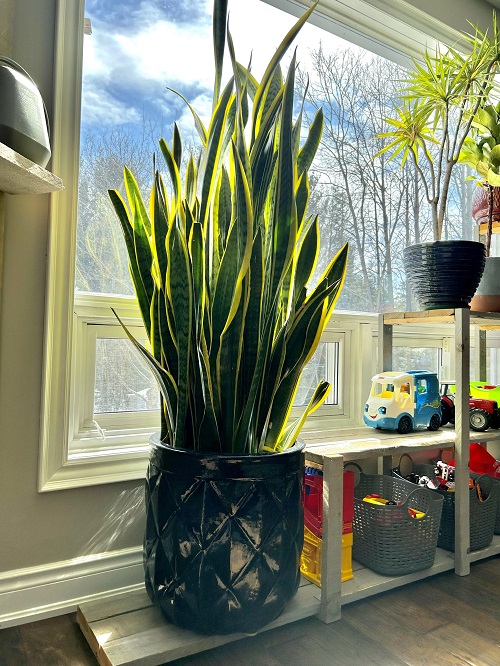While these air-purifying houseplants are highly resilient, where you keep them matters—Never Place Your Snake Plant in these Spots!
Where you keep your snake plant (Dracaena trifasciata) perhaps matters more than how you keep this hardy houseplant! Check out spots where you should never place this sword-like variegated foliage plant to ensure it flourishes in your home.
Never Place Your Snake Plant in These 5 Spots
1. Spot with Direct Sunlight
Although snake plants are tough and adaptable, prolonged exposure to direct sunlight can scorch the foliage. Your Sansevierias will naturally thrive in dappled sunshine—conditions that mimic the dry, tropical climates of their native habitat in West and West Central Africa.
While they can tolerate partial sunlight for short periods, extended exposure to harsh sunshine will cause browning of leaves and other serious issues.
2. Poor Ventilated Area
Avoid placing your snake plant in poorly ventilated areas, as stagnant air can create a damp environment that encourages root rot and fungal diseases. While snake plants can handle some humidity, excessive moisture leads to wilting leaves and stunted growth.
For example, if you keep your snake plant in a bathroom or kitchen to benefit from humidity, ensure adequate ventilation. Usually, these succulents prefer drier indoor conditions with humidity around 40%!
Similarly, avoid placing it near plants that require frequent watering, as this can increase the moisture in the air and soil, and you might water it accidentally more often while watering other houseplants.
3. Exposed to Wet Conditions
Too much humidity and moisture indoors or outdoors don’t work well for snake plants. Excessive and consistent moisture from rainwater or seepage can harm this drought-tolerant plant by causing water to pool in the pot, leading to root rot and fungal infections.
Keep your snake plant away from unsheltered windows, open balconies, or areas prone to downpours and water accumulation. Again, avoid placing it alongside moisture-loving plants that are frequently watered or misted. Here’s how to hydrate your snake plant correctly.
4. Drafty Entry Ways and Windows

Snake plants cannot tolerate sudden temperature changes caused by fluctuating air currents. Placing your plant in a spot with sudden fluctuations from air vents, heaters, coolers, or even windows and doors that open repeatedly could lead to discoloration and mushy leaves.
The plant is tropical at the end of the day; it is used to consistently warm and stable temperatures with no extremities.
5. In Dark Corners
While snake plants are known for tolerating low-light conditions, placing them in complete darkness is a big no! These air-purifying wizards need light to perform photosynthesis—essential for producing the energy they need to grow.
Over time, a lack of light will weaken your snake plant, causing it to turn pale and leggy. Dark corners also tend to have poor ventilation, increasing the risk of mold and pests due to stagnant, stuffy air.





I am having a hard time with my snake plant it is turning Brown. I am going to try and make it work. Wish me luck